In-line hypoxia in cell culture under flow
Compatible with most types of flow controller
Use your current peristaltic, pressure-driven or syringe pump
In line adjustment of oxygen concentration
Precisely control or change the oxygen concentration of your media
Minimize the effects of tubing permeability
Place the in line hypoxia chamber right before your chip
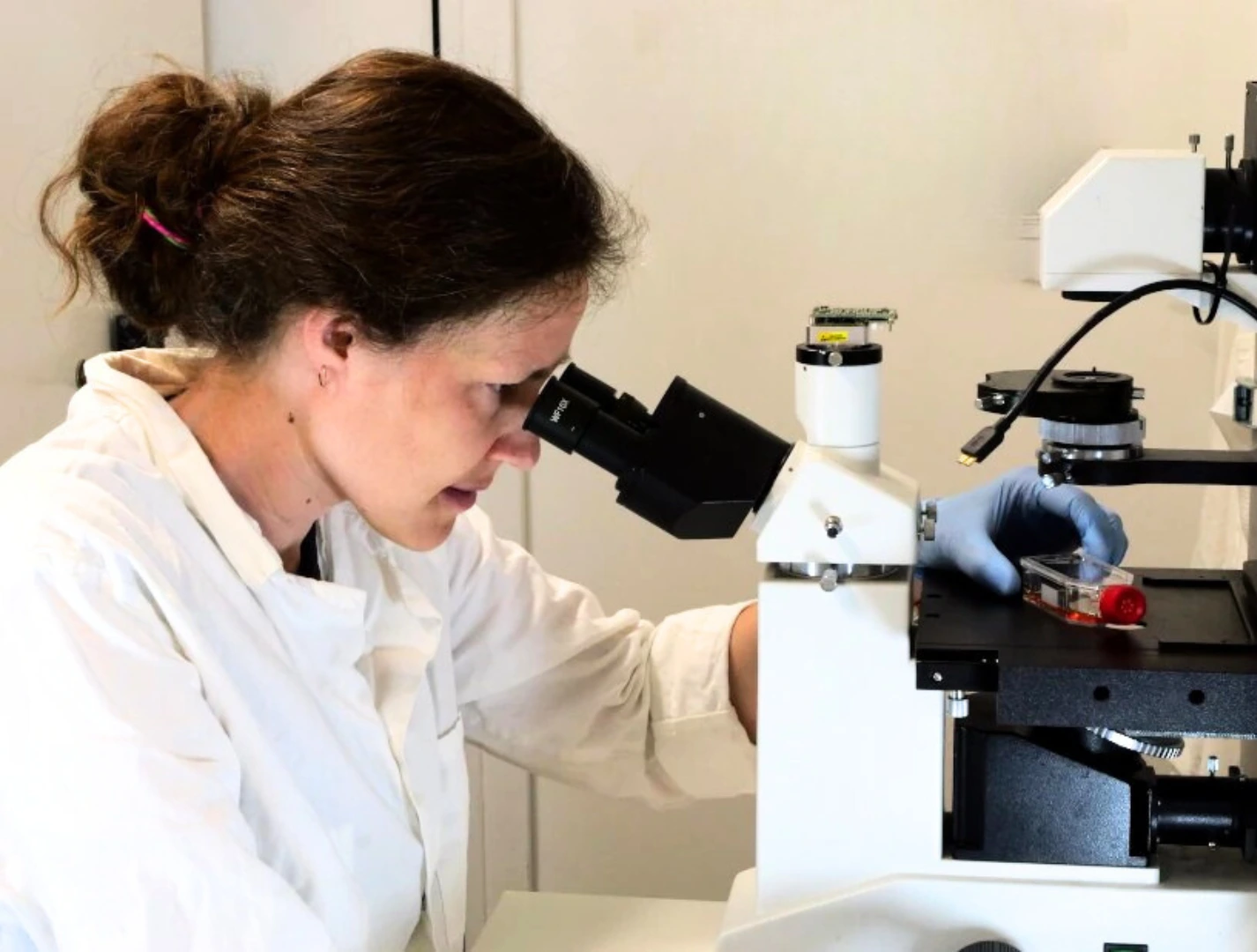
Need a microfluidic SME partner for your Horizon Europe project?
In-line hypoxia in cell culture under flow
Hypoxia Chambers as the field standard
To reproduce hypoxic conditions in cell culture, most researchers use hypoxia chambers. They consist of large pieces of equipment with a tight control of the internal atmosphere so the desired gas partial pressures are diffused into the cell culture media. They are the standard when we talk about hypoxia assays, however, few discuss the limitations of the diffusion approach.
In hypoxia chambers, or any other gas-controlling equipment such as incubators, the atmosphere usually takes minutes to equilibrate to the new partial pressures, but the cell culture media can take hours [1]. Adding that to the fact that the oxygen consumption of cells varies depending on the cell type results in an unknown oxygen concentration in the cellular microenvironment.
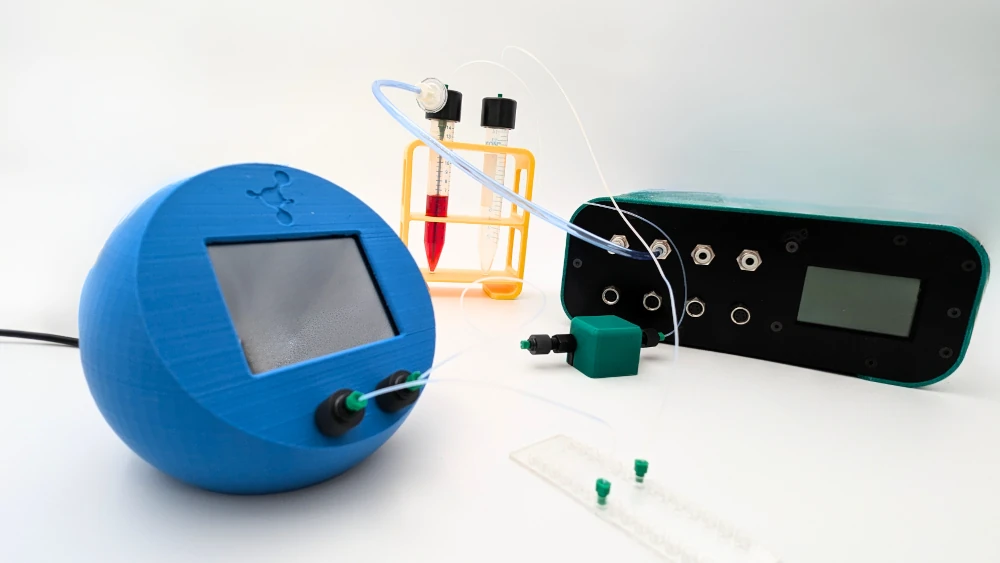
A new paradigm of increased complexity
As the field evolves towards more physiologically-relevant systems, as with organ-on-chip and microphysiological systems often under flow, and complexifies, with different cell types in the same microfluidic device, so does the need to better define gas control of the cell cultures.
With that in mind, we decided to move away from hypoxia chambers and develop a module for inline gas control of perfused cell cultures.

The inline hypoxia chamber pack includes:
Flow sensor (Galileo, MIC)
Cell culture pump
In-line Hypoxia chamber
Reservoirs
Tubings and fittings
Microfluidic chip
User guide
Software (Galileo user interface)
The setup consists of a pressure-driven flow controller and flow sensor to ensure the highest possible accuracy and smoothness of flow profile and our in-line hypoxia chamber that can be easily placed near the microfluidic device to decrease gas exchange between the atmosphere and the media through tubing and connections. The in-line hypoxia chamber is all encompassing, meaning, it allows for control and sensing of gas concentration in the liquid, while avoiding the insertion of bubbles or foam into the system.
More flexible than hypoxia chambers
Unlike hypoxia chambers, this system is particularly interesting when there is need for multiple gas compositions within the same experiment, as is the case for gut-on-chip or placenta-on-chip experiments, for example.
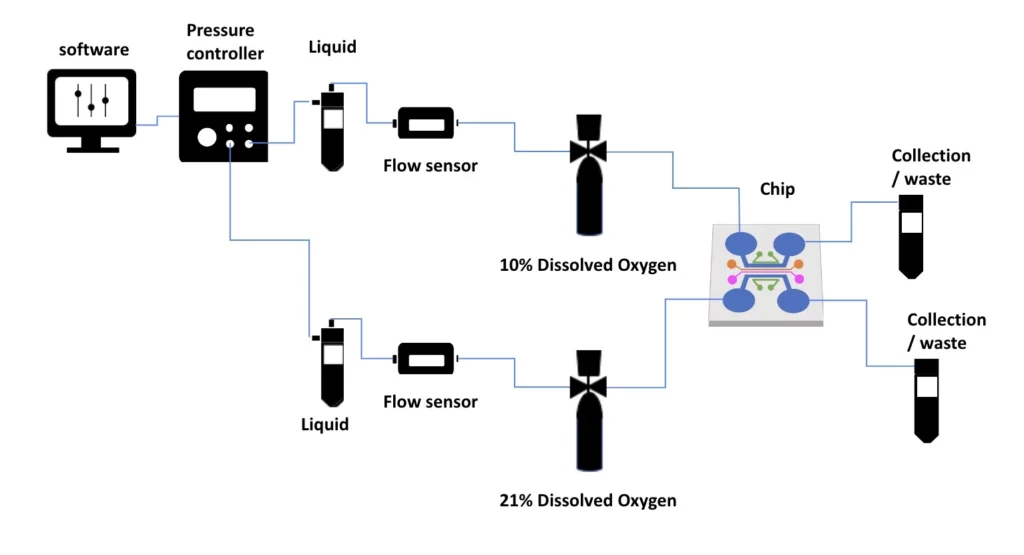
References
Pavlacky J, Polak J. Technical Feasibility and Physiological Relevance of Hypoxic Cell Culture Models. Front Endocrinol (Lausanne). 2020 Feb 21;11:57. doi: 10.3389/fendo.2020.00057. PMID: 32153502; PMCID: PMC7046623.
Hypoxia for dynamic cell culture applications
Some biological applications of our hypoxia system include:
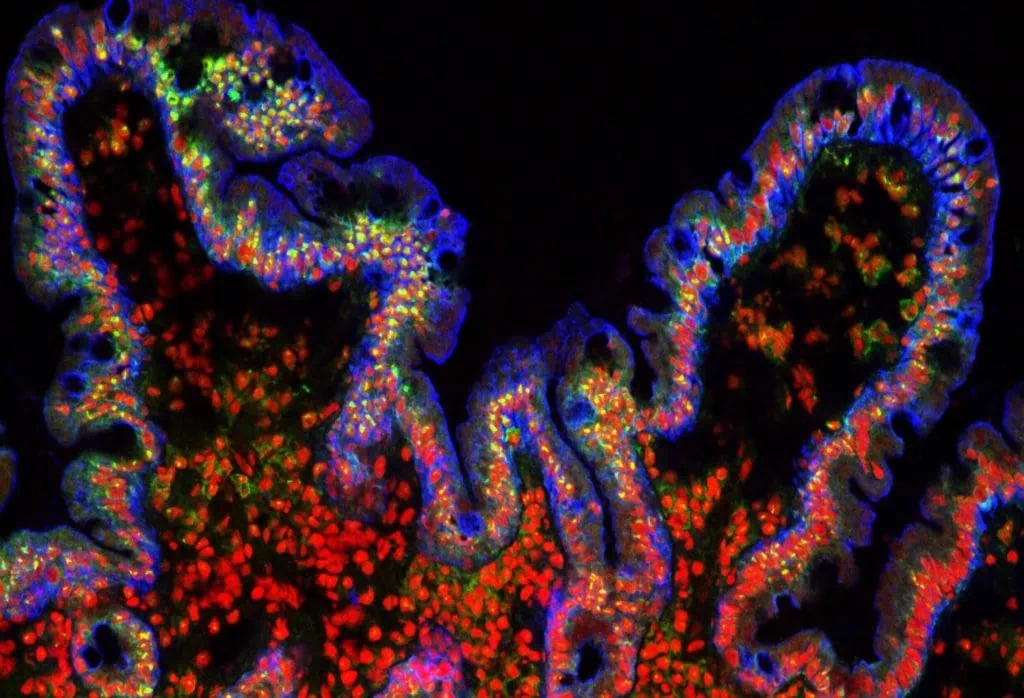
Gut-on-a-chip pack
Intestinal cells coculture under flow, mimicking the gut physiology
✓ All microfluidic pieces included, quick and easy assembly
✓ Dynamic culture conditions
✓ Advanced in viro/ex vivo
Gut-on-chip

Inflammatory bowel disease model
Automatically collect important markers of IBD in a relevant in vitro model
✓ Uncover cytokine profile changes in time
✓ Mimic pathological conditions of IBD
✓ Tailor sample volume to your analysis
Inflammatory bowel disease model
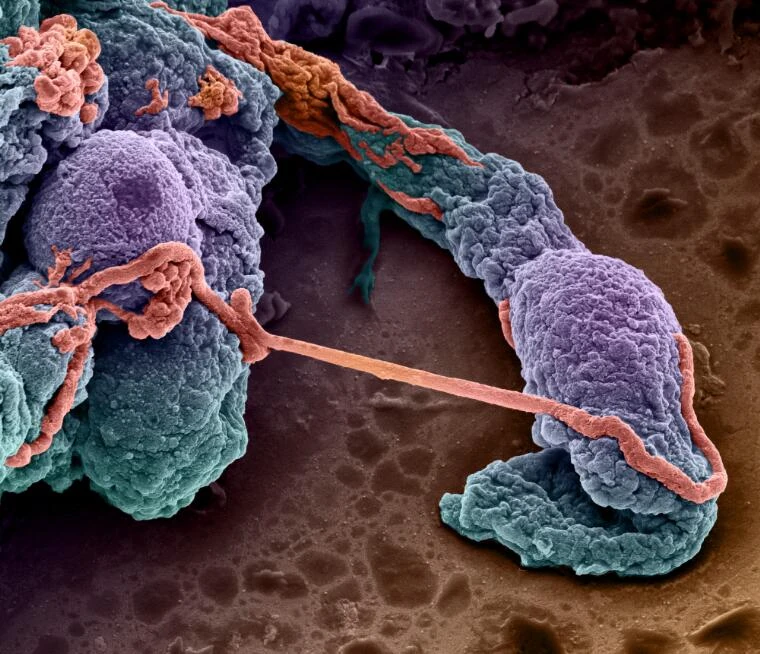
Blood-brain barrier on chip
Plug-and-play instrument pack for long term BBB on a chip study
✓ Relevant microenvironment
✓ Automatized organ-on-chip perfusion
✓ Plug-and-play microfluidic platform
Blood-brain barrier on chip
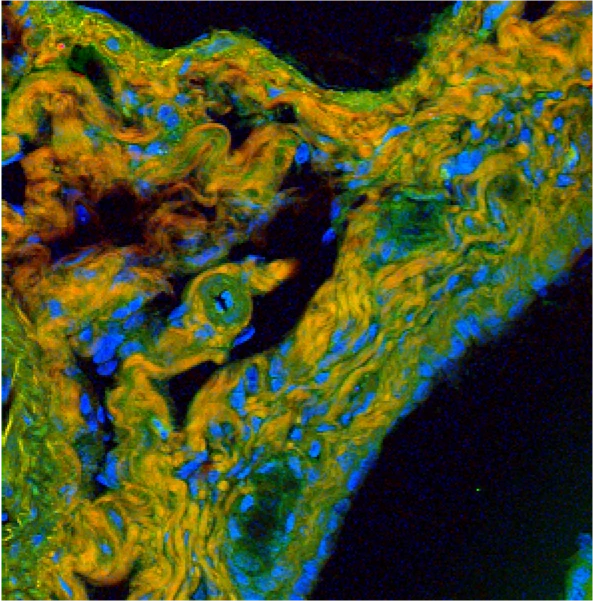
Liver-on-a-chip pack
Mimic the liver microenvironment in long term experiments
✓ Improve your reproducibility with physiological culturing conditions
✓ Automated and controlled supply of nutrients in a stable flow
✓ Test different conditions at the same time
Liver-on-chip
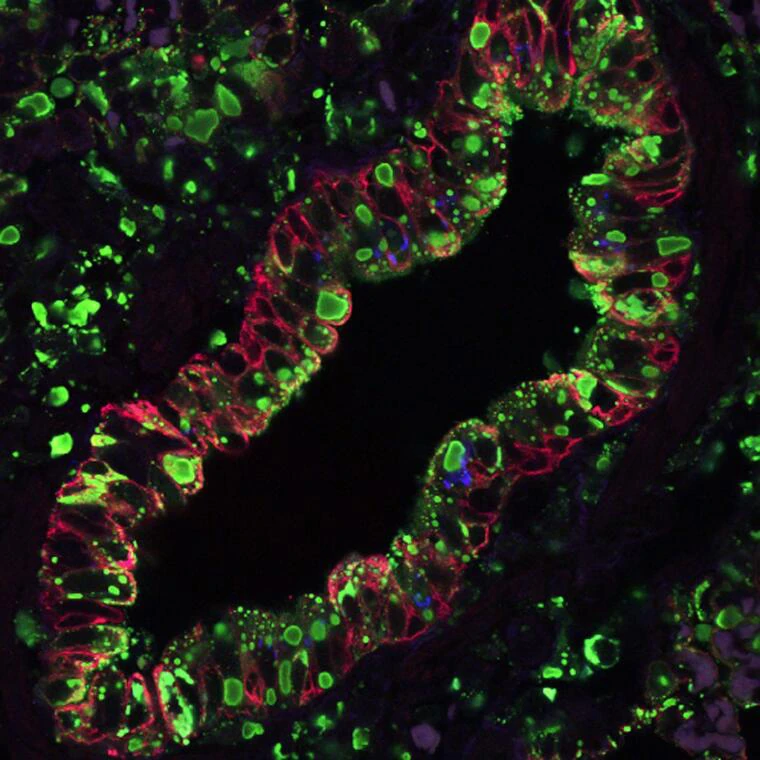
Lung-on-a-chip pack
Perform lung research in a physiologically relevant microenvironment
✓ Culture your lung cells in a physiological air-liquid interface
✓ Continuous and controlled supply of nutrients in a stable flow
✓ Stop losing your cell experiment due to clogging
Lung-on-a-chip
Placenta-on-chip
And many more!
In-line Hypoxia chamber technical specifications
Building upon hypoxia chambers as the field standard, the following table summarizes the main specifications of the system.
| Components | Technical specifications |
|---|---|
| Wetted Material | PTFE |
| Dimensions | 10x10x10 cm (control unit) 3x1x1 cm (sensing unit) |
| Admissible Flow rates | 1-100 µL/min |
| Accessible Oxygen Levels | 0-20 %DO |
| Stability of the control | +/- 0.5 %DO |
| Dynamic range of control | 0.5% DO / min |
Cell culture pump technical specifications
The cell culture pump can come with 1 to 4 channels. Each channel connects to a flow sensor with a feedback-loop between pressure and flow rate. Each channel has the following specifications (tested with a set pressure value of 2 bar):
| Characteristics | Specifications |
|---|---|
| Accuracy | -27.75 mbar |
| Air consumption | 0.24 L/min |
| Response time | 140 ms |
| Settling time | 2750 ms |
| Overshoot | Room temperature to 70 oC |
| Temperature accuracy | 0.12 mbar |
Customize your pack
All the instruments are controlled by the same software, allowing workflow automation and easy integration in your program with free available libraries.
Frequently asked questions
Does the in-line hypoxia chamber act as a hypoxia chamber?
In principle yes, hypoxia chambers rely on diffusion to equilibrate gas concentrations in the media. The in-line hypoxia chamber makes this process more efficient.
Are the tubings and connectors impermeable to oxygen?
The standard PTFE tubing is permeable to oxygen, and the connectors in themselves are impermeable but the connection is not. Knowing that, our team has come up with solutions to minimize the entry of atmospheric oxygen into the system.
Which microfluidic chips can be connected to the in-line hypoxia chamber?
The in-line hypoxia chamber can be connected to any microfluidic chip, using the right connectors.
Can the in-line hypoxia chamber be placed inside the CO2 incubator?
The system is intended to replace the need for a CO2 incubator.
What is the maximum flow rate that can be applied?
The system works well with the range of 0-5ml/min.



